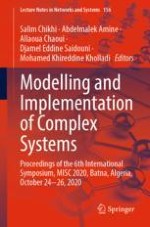This proceedings book gives a new vision and real progress towards more difficult problems resolution. In trying to solve the problems we face every day in the complex world we are living, we are constantly developing artificial systems and increasingly complex middleware. Indeed, the research works contained in this book address a large spread of nowadays topics like IoT architectures, communication and routing protocols, smart systems, software defined networks (SDNs), natural language processing (NLP), social media, health systems, machine intelligence and data science, soft computing and optimization, and software technology. This book, which is a selective collection of research papers accepted by the international program committee of the 6th International Symposium on Modelling and Implementation of Complex Systems (MISC 2020), considers intelligence (CI) more as a way of thinking about problems. It includes a mix of old efficient (Fuzzy, NN, GA) and modern AI techniques (deep learning and CNN). The whole complex systems research community finds in this book an appropriate way to approach problems that have no algorithmic solution and finds many well-formulated technical challenges.
